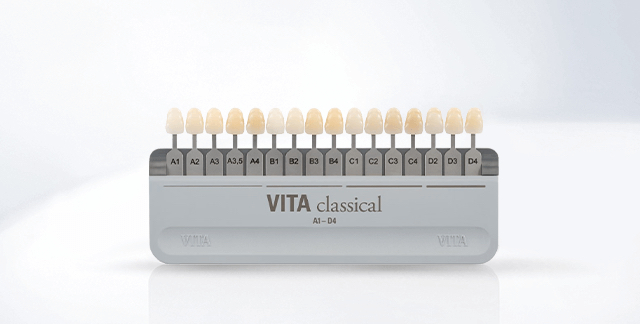What Determines Tooth Color?
Several factors determine tooth colour, including genetics, lifestyle and oral hygiene. Understanding that tooth shade ranges from person to person is important.
Genetically, some individuals may naturally have brighter or darker teeth. Certain lifestyle choices, like smoking, drinking coffee or tea, and not taking care of your teeth, can cause discoloration.
As people age, their teeth shade can also become more yellow. This happens because the outer layer of enamel wears away. This reveals the yellowish dentin underneath.
Overall, a combination of genetic predisposition, lifestyle choices, and aging processes determines the color of an individual’s teeth.
Factors influencing the teeth color
- Genetics: Genetic factors play a significant role in determining the natural color of teeth. Some individuals may inherit genes that predispose them to brighter or darker teeth.
- Dietary Habits: Consuming certain foods and beverages can stain the teeth over time. Foods like coffee, tea, red wine, and dark-colored fruits can contribute to surface staining.
- Tobacco Use: Smoking or using tobacco products can lead to yellow or brown stains on the teeth because of tar and nicotine.
- Poor Oral Hygiene: Insufficient brushing and flossing can allow plaque to accumulate on the teeth, leading to decay.
- Age: As people age, the enamel naturally wears down, exposing the underlying dentin, which is yellowish in color. This can cause the teeth to appear darker or more yellow over time.
- Medications: Some medications, such as certain antibiotics and antihistamines, can cause tooth discoloration, especially if taken during tooth development in childhood.
- Trauma: Trauma to the teeth, such as a fall or impact, can cause internal bleeding or death of the tooth pulp. This can also lead to discoloration of the affected tooth.
- Medical Conditions: Certain medical conditions, such as enamel hypoplasia or fluorosis, can affect tooth development and result in abnormal tooth coloration.
- Environmental Factors: Exposure to high levels of fluoride in water can cause tooth discoloration, known as fluorosis. This happens particularly often with children, whose teeth are still developing.
Importance of Understanding Your Tooth Color
Aesthetics and Confidence
Oral Health Indicators
Changes in tooth color can sometimes indicate underlying dental issues. Yellow or brown discoloration may be a sign of decay or enamel erosion. White spots on teeth could indicate early signs of dental fluorosis or enamel hypoplasia. By recognizing these changes, you can seek timely dental care to address any underlying problems.
Treatment Planning
Monitoring Oral Hygiene
Preventive Care
By understanding the factors that influence tooth color, you can take proactive steps to prevent staining and discoloration. This includes:
- practicing good oral hygiene,
- avoiding or minimizing consumption of staining foods and beverages,
- and seeking professional dental check-ups and whitening procedures regularly.
Most Common Teeth Color Charts
Vita Classical Shade Guide

The Vita shade guide is one of the most popular and widely used teeth color charts in dentistry. Dentists use this guide to match restorations, such as crowns or veneers, to the natural color of a patient’s teeth.
The arrangement of the shades in the VITA classical A1-D4 shade guide family of shades is as follows:
- A1 – A4 (reddish-brown)
- B1 – B4 (reddish-yellowish)
- C1 – C4 (greyish shades)
- D2 – D4 (reddish-gray)
Bleachedguide 3D-Master Shade Guide

The VITA Bleachedguide 3D-MASTER is the best way to plan and monitor tooth whitening processes. It integrates the 29 shade levels defined by the American Dental Association (ADA). It has also a logical structure, based on the three parameters of brightness (value), chroma (saturation) and hue (color).
Other teeth color charts:
- Munsell Teeth Color System
- Chromascop Shade Guide
- Bioform Shade Guide
Conclusion
Understanding teeth color chart is essential for maintaining optimal oral health and achieving a bright, confident smile. By recognizing the factors influencing tooth shade and adopting appropriate preventive measures, individuals can preserve their dental aesthetics and overall well-being.
At Cosmedica Dental we offer professional teeth whitening to improve your self-confidence and get the perfect smile. The staff at our dental clinic in Turkey will be happy to provide you with free advice on all matters!